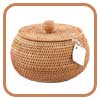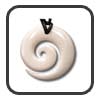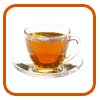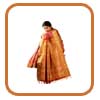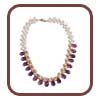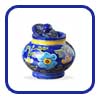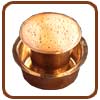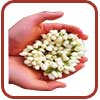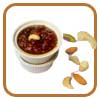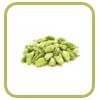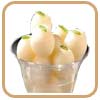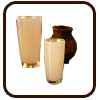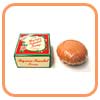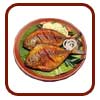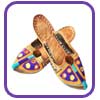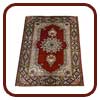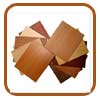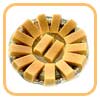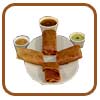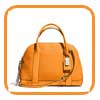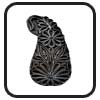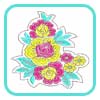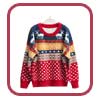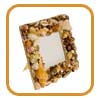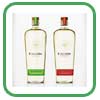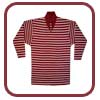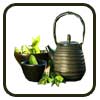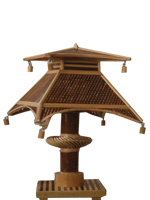 HISTORY OF ASSAM CANE PRODUCTS
HISTORY OF ASSAM CANE PRODUCTS
The history of cane and its associated products in India is traced back to the 2nd century AD. The cane furniture of India is characterized with features like lucidness and comfort with extreme beauty or aesthetic appeal. Cane is noted for its special property in spite of being quite strong it can also be bendable easily and thus making it ideal for furniture making. In today's scenario cane is seen used in making all types of furniture like chairs, tables, sofas, stools, shoe racks, bookshelves, cabinets, beds, couches, recliners, etc. The cane products in India are available at different price ranges suiting the budget of all class of people. The North East state in India, Assam is noted for its rich sylvan resources and its forest areas are stocked with bamboos and canes of various species. Cane and bamboo having a wide variety of potential forms an indispensable part of the lifestyle and economy of the people of Assam.
 HISTORY AND ORIGIN OF THE ANCIENT PAST
HISTORY AND ORIGIN OF THE ANCIENT PAST
However there are no exact records to know the history and origin of the ancient past, history and genesis of the craft of cane products in Assam. But it is taken into consideration that the craft is done from the misty past with the very dawn of civilization. During ancient days cutting of cane and bamboo was considered as forbidden by the natives of Assam on auspicious days. The people of Assam consider that cane is associated with lot of religious significance and has number of auspicious character. During the early period of the 7th century AD when Bhaskara Varman ruled the state of Assam there was lot of mentions about the flourishing state of cane and bamboo products of Assam. There are records about the cane products like mats and cool mats known as sital pitas which were used by the rich people of the state and they were beautifully decorated and vibrantly coloured.
 CLASSICAL WRITERS TESTIFY
CLASSICAL WRITERS TESTIFY
The classical writers testify the abundance of cane in the forests of Assam. Ptolemy, for instance, stated that to the east of Serica, which we have identified with Assam, there were hills and marshes where canes were grown and used as bridges. The famous book of 'Harshacharita' gives evidences for the production and use of cane articles in the province of Assam. Cane was cultivated in the state and was used for various purposes. Bana gives number of evidences as witness to this highly developed craft like the King of Assam Bhaskara Varman sent to Harsha goodies like baskets of variously colored reeds, 'thick bamboo tubes' and various birds in 'bamboo cages'. All these proves that the art of cane existed in the state at a much early period and is still continued or passed on from earlier generations like any other art in other parts of the country.
 VARIOUS QUALITIES OF CANE PRODUCTS
VARIOUS QUALITIES OF CANE PRODUCTS
Various qualities like suppleness, durability, abundance, tone and resiliency and of course the quick maturity of bamboo have made it a very popular choice for making cane furniture. Some of the areas in Assam which have abundant cultivation of bamboo and cane are Mizo Hills, Cachar, Mikir and North Cachar Hills, Nowgong and Lakhimpur districts.
Some of the most common and highly economically valued bamboos include the Muli (Melocanna bambusoides), Dalu (Teinostachyum dalloa), Khang (Dendrocalmus longispatnus), Kaligoda (Oxytenanthera nigrociliata) and Pecha (Dendrocalamus Hamilton-ii). The Muli and the Dalu have great commercial importance, the former for pulping, constructional and fencing purposes, and the latter for the mat and basket industry.
 ART RELATED TO BAMBOO AND CANE PRODUCTS
ART RELATED TO BAMBOO AND CANE PRODUCTS
The art related to bamboo and cane products is the most comprehensive of all the crafts practiced by most of the people of Assam. It is mostly practiced as a household job and for extensive household needs. The cane industry has found a high place among the handicrafts of the North Eastern States. Both full and part time employment is provided by the state government where skilled artisans produce decorative baskets, furniture and mats on a commercial basis. The cane products though are mostly available in natural color give a very trendy look and is recognized for its durability, low weight, easy maintenance and eco-friendliness. The cane craft in Assam is practised by a wide range of the peasant group irrespective of caste and community. Caning is the process or craft of weaving furniture and other cane related products. Cane furniture of India is very famous across the globe. Cane furniture is not very heavy and is very compact so that it is easy to be moved and kept anywhere in the house.
 SMALL SHOPS ON THE ROADSIDE
SMALL SHOPS ON THE ROADSIDE
Various qualities like suppleness, durability, abundance
Apart from the showrooms there are also small shops on the roadside where they make furniture and sell. Cane was one of the earliest and most ancient techniques followed in furniture manufacture. The material which is peeled off from the outer skin of the rattan stalk is cane and the skin is highly durable, flexible, shinny and non porous. Rattan a climber and more of a vine like plant is native to Indonesia and it is also common in Asia and Africa. Rattan grows quite high and its stalk is very strong and solid with a diameter of about 2-5 cm. Rattan is most common in dense tropical forests where it grows to hundreds of feet towards sunlight. It is harvested without harming the trees, and there are currently efforts underway to ensure the sustainability of rattan harvesting. After the process of harvesting the thorns and joints are removed and then the core and the bark are separated.
 CANED FURNITURE AND OTHER RELATED PRODUCTS
CANED FURNITURE AND OTHER RELATED PRODUCTS
Then the bark goes into further steps of processing where it is made into thin strands and then caning takes place. In the process of caning the thin strands are woven to make caned furniture and other related products. The material used in this art is cane and the process in known as caning and the outcome is the cane furniture. Cane products which are more eco- friendly is no longer an outdoor decor or shows a rusty living but are made more trendy for contemporary living. Even the unrefined natural bamboo furniture, milled and laminated bamboo with a darker stained finish is leading the way as the new look of eco- furniture. When compared to oak, cane is much stronger and is not affected by water and gives an aesthetic look which is proved to be a sustainable natural resource and a pioneer material in the movement for eco-friendly furniture. The growth rate of bamboo is quite fast and can be harvested continuously for many years
 INITIAL PROCESS IN THE MAKING OF CANE PRODUCTS
INITIAL PROCESS IN THE MAKING OF CANE PRODUCTS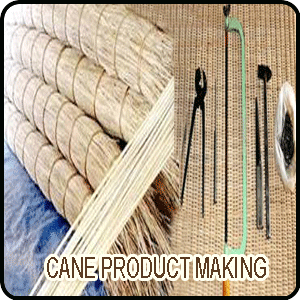
The initial process in the making of any cane related products is to check for flaws. The stalks of bamboo are cut into thin sections. To increase the moisture content the cut bamboo strips are boiled at a temperature of 1000 deg C for 24 hours approximately. Copper sulphate solution is added in order to defend against fungal and insect attacks. Once the desired color is achieved the bamboo is dried in fresh air or in a kiln. The moment we talk about bamboo its natural light color comes into picture. But however the steaming process imparts a dark colour to the bamboo which still does not affect the durability. The color can be adjusted according to requirement by adjusting the temperature where higher the temperature the deeper the colour. The Food and Agriculture Organization of the United Nations recommends steaming at a pressure of 3-5 kg/sq. cm. for 90-105 minutes in order to produce a chestnut shade. This carbonized bamboo is the new trend hitting the eco-furniture market.
-The ductile flexible bamboo is stripped smooth after the steaming process. After the bamboo is smoothened it is laminated and then screwed together or glued together. The piling process is usually done with roller spreaders, spray lines, curtain coaters or brushes to form vertical grain bamboo panels. Once the panels are ready they are assembled to arrive at various products like chairs, tables, sofas, bookshelves and cabinets. Different methods are followed to assemble the bamboo furniture and the most common one is to entwine the vertical grain bamboo panels with a pre-molded frame of bamboo or wood. Many bamboo furniture makers fasten strips of bamboo around important joints to reinforce them. Rope and hemp is also used in the process of fastening. Once everything is done a coat of lacquer is applied to the product and also some furniture company treat the products against parasites.
-There are more than 51 species of cane which is grown in Assam which used for varied purposes. Studies are being conducted in some research centers in India as to the suitability of the bamboo being used as reinforcement to replace mild steel bars in light concrete structures. Apart from these canes are used in making umbrella handles, walking sticks, tool handles, fishing rods, tent poles, cordage, ladders, yokes, baskets, toys, hand-fans and various domestic and agricultural implements. The manufacture of all this does not require a large scale industry and huge machines but instead it is more concentrated in cottage and small scale industries. Some of the common tools required in the process of bamboo and cane craft are 'dao' (bill-hook), a knife and a 'jak' ('v' shaped wooden frame),saws, hammers, tongs, ovens, bending frame, narum which is a sharp and pointed carving blade, pliers and pincers.
-However with modernization there are lot of urbanized establishments which are involved in the manufacturing of various types of cane furniture and other sundry articles, like boxes, murrahs, cradles, office trays, bottle carriers, tiffin baskets, bicycle baskets, waste paper baskets, etc. Because the above mentioned products require lot of man power the cost of the products are also higher than the regular bamboo products. The baskets made out of cane are used for various purposes. The cane baskets are designed to carry goods, store grains and valuables. There are special community of people namely the Kukis, Mikirs and Mizos who design these baskets with special locking arrangements so that they can store and protect ornaments and other expensive things. Apart from Assam other North Eastern states are also involved in the making of plucking baskets which are mostly purchased by the tea planters at regular intervals of time.
-Further study has to be done or analyze the market related to cane products so as to cater to the need of consumer market. State Government Emporia are also trying to popularize a few artistic and decorative cane and bamboo products outside the State to organize the unorganized and scattered handicraft artisans. The Government of Assam had launched a scheme for registration of handicraft artisans and handicrafts units dealing with Cane products.
 DEALERS OF ORIGINAL CANE PRODUCTS
DEALERS OF ORIGINAL CANE PRODUCTS
| 1. Assam Cane Furniture,
No. 1709, Link Road, Industrial Area- A, Cheema Chowk,
Ludhiana -141 003, Punjab, India
|
| 2. GHAR-ASSAM CANE FURNITURE,
91/A ,6th cross , Opp Mantri Elite,
BTM 2nd Stage, Bannerghatta Road,
Bangalore - 560076
|
| 3. The Bengal Basket Co.
61, Ashutosh Mukherjee Lane,
Howrah - 711106,
West Bengal, India
|
| 4. Shree Maruti Furniture,
old post office, Near Axis Bank, G S Road,
Guwahati - 781005
|
| 5. Geebika,
R G Baruah Road Zoo Tiniali,
Zoo Road, Guwahati - 781024
|
| 6. Dee Bereeas Crafts
- S M Complex,1st Floor, Near Pn Bank,
R G Baruah Road, Zoo Road, Guwahati - 781005, Ph: (0361) 2206777 |
| 7. Deka Cane Furniture,
Beltola Road, Guwahati,
Beltola Road, Khanapara, Guwahati - 781022 , Ph: 9707294830
|
 HISTORY OF ASSAM CANE PRODUCTS
HISTORY OF ASSAM CANE PRODUCTS HISTORY AND ORIGIN OF THE ANCIENT PAST
HISTORY AND ORIGIN OF THE ANCIENT PAST CLASSICAL WRITERS TESTIFY
CLASSICAL WRITERS TESTIFY VARIOUS QUALITIES OF CANE PRODUCTS
VARIOUS QUALITIES OF CANE PRODUCTS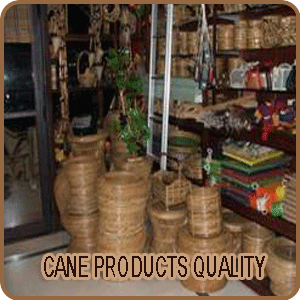
 ART RELATED TO BAMBOO AND CANE PRODUCTS
ART RELATED TO BAMBOO AND CANE PRODUCTS SMALL SHOPS ON THE ROADSIDE
SMALL SHOPS ON THE ROADSIDE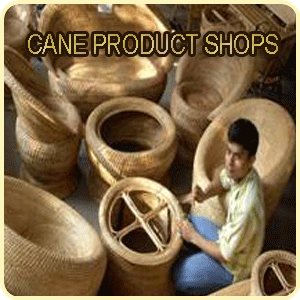
 CANED FURNITURE AND OTHER RELATED PRODUCTS
CANED FURNITURE AND OTHER RELATED PRODUCTS INITIAL PROCESS IN THE MAKING OF CANE PRODUCTS
INITIAL PROCESS IN THE MAKING OF CANE PRODUCTS
 DEALERS OF ORIGINAL CANE PRODUCTS
DEALERS OF ORIGINAL CANE PRODUCTS



